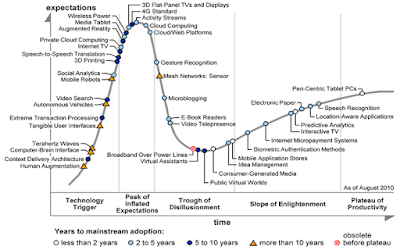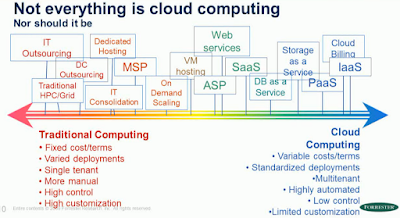
Now, the question still is how many of us really know the true meaning of cloud computing? Wikipedia does its bit by explaining key concepts in cloud computing. Here is the closest definition I could see for Cloud Computing on wikipedia
Cloud computing is Internet-based computing, whereby shared servers provide resources, software, and data to computers and other devices on demand, as with the electricity grid.It is a good starting point. But there are a number of things that are not well explained. To be fair with everybody, it is not easy to define cloud computing ! There is so much information out there that tries to explain the true meaning of cloud computing but it is hard to pinpoint the key parts.
Here is a very funny video of how 10 year olds explain what cloud computing is
I don't necessarily agree with everything in the video. When such kind of information is produced, the focus tends to shift on subset or related technologies based on who is sponsoring the content. The end result is that, you hear the things that sponsor wants you to listen. This might also mean you are missing the big picture similar to blind men and elephant tale.
The best information that I have found so far is from James Staten. The good thing about him is that he makes it easy for readers to help understand cloud computing. Here is how James defines cloud computing -
Cloud Computing is a standardized IT capability (services, software or infrastructure) in a pay-per-use, self-service wayThe 3 main layers of cloud computing could be described as

Finally, it is important to distinguish some aspects of cloud computing from the traditional IT. Here is a great illustration:

In 2011, we are likely to see more and more customer transitions towards cloud. In other words, rather than "if", it is going to be a question of "when" the transition will take place! There have been several solutions that have been rebranded to look like cloud computing solutions. So, before somebody claims that they have cloud computing solution, it is important to make sure it truly meets basic characteristics for a cloud solution. Otherwise it would be just a case of "cloud-washing" !
I hope some of the things that I referred here would be useful for you to understand what "true" cloud computing is all about.






